Bethan Langley’s Placement Report
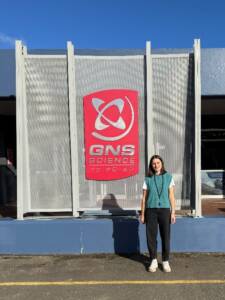


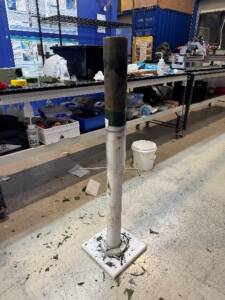

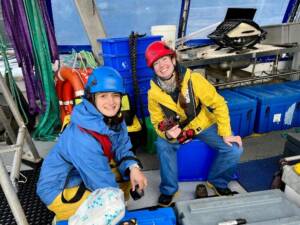
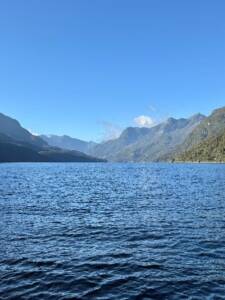
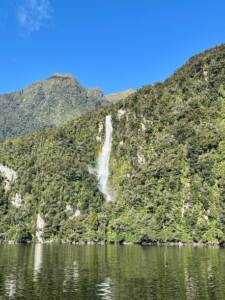
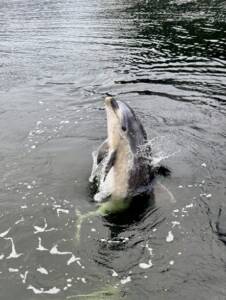
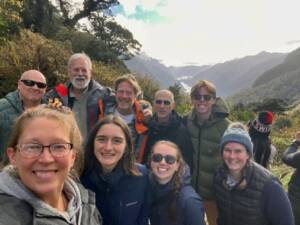
Placement Location
Placement Dates
Report
I am incredibly grateful to have had the opportunity to undertake a 3-month placement (March – June 2025) at GNS Science Te Pū Ao, funded by the IAPETUS2 Doctoral Training Programme. GNS Science is the New Zealand Crown Research Institute for Earth and materials sciences, specialising in the processes that shape the surface and subsurface of the Earth in Aotearoa New Zealand, the Southwest Pacific and Antarctica. During the placement, I contributed to the Fiordland Carbon Sequestration Project, which explores the capacity of New Zealand’s fjords (Fiordland) to capture and store carbon and assesses how climate change and related management strategies may influence this natural carbon cycle.
Project work
During my placement, I worked on a pilot study utilising grain-size and XRF data from sediment cores that had previously been collected from Fiordland. The aim of this project was to evaluate whether XRF elemental data could serve as a proxy for grain-size. Grain-size analysis is both labour-intensive and destructive, whereas XRF scanning is non-destructive and produces high-resolution data. While similar approaches have been applied successfully to lake sediments, this project explored the potential to apply this method to the sediments of Fiordland.
This was my first time working with XRF and grain-size datasets and it was a valuable opportunity to develop new technical skills. I learned how to process this data using packages in R and how to visualise it effectively through figures. These outputs formed the basis of a report summarising my findings. It is hoped that this work will inform whether XRF data can be used to estimate grain-size across the full suite of cores collected for the broader Fiordland carbon project, potentially streamlining future analysis by reducing the need for traditional grain-size measurements.
Laboratory work
As part of my placement, I spent time at the Otago Repository for Core Analysis (ORCA) in Dunedin, where sediment samples from the Fiordland project are stored and analysed. It was a valuable opportunity to see how a facility of this kind operates and supports large-scale geoscience research. During my time here, I undertook a range of tasks that provided valuable hands-on experience, including
- Splitting and scraping sediment cores in preparation for downstream analyses.
- Scanning cores using the Geotek Multi-Sensor Core Logger (MSCL-S), using gamma attenuation as a proxy for density.
- Sampling sediment cores for radiocarbon dating, which involved identifying suitable materials – such as twigs and leaves – then extracting, cleaning, and preparing them for submission to the radiocarbon laboratory.
- Contributing to the Fiordland project database, which tracks all collected samples including sediment grabs, cores, and CTD locations. I assisted with data entry and helped improve the organisation and functionality of the database.
These tasks allowed me to develop new technical skills, particularly in sediment core processing and analysis and radiocarbon sample preparation.
Fieldwork
I had the opportunity to participate in a 7-day research cruise in Fiordland as part of the Fiordland Carbon Sequestration project. The primary aim of the expedition was to quantify buried carbon stocks and calculate annual carbon burial – key steps toward advocating for the inclusion of fjord systems in carbon accounting frameworks, both in New Zealand and globally.
During the cruise, we sampled several fiords where we conducted conductivity, temperature and density (CTD) casts to profile the water column and collected water samples to investigate the distribution and composition of organic carbon in the water column. We also collected sediment cores using a multi-corer to assess organic carbon burial and a piston corer for longer-term carbon records with dating through radiocarbon techniques. This was an incredible valuable experience, particularly as I had not been able to work with sediment cores during my PhD due to COVID-related fieldwork constraints. Being part of this cruise allowed me to develop practical skills in core collection and handling that has been valuable for my development in my field of marine science.
Additionally, this experience enabled me to draw comparisons between the fjords of New Zealand and those in Greenland, which I am studying for my PhD. For example, I learned about the frequent landslides in Fiordland that deliver large amounts of terrestrial vegetation into the fjord – something not observed in the sparsely vegetated fjords of Greenland. These insights have broadened my perspective on fjord systems and carbon dynamics, and I believe they will strengthen the contextual understanding and interpretation of my own PhD research.
The cruise also provided an excellent opportunity to build my professional network and learn from researchers at the University of Otago and Stanford University, who were also involved in the project. Their insights enriched my understanding and offered new perspectives on fjord carbon cycling.
Shared knowledge
During my placement, I had the opportunity to share aspects of my PhD research through several presentations. I first presented to the Past Climates and Environments team, which I was part of during my time at GNS Science. I also gave a seminar as part of the weekly GNS Science Seminar series, reaching a wider audience across GNS Science sites in Wellington, Dunedin and Auckland. These experiences provided valuable practice in communicating my research to a broader scientific community and allowed me to receive constructive feedback. Presenting also helped me identify overlaps between my PhD work and ongoing research at GNS, leading to discussions around potential future collaborations. Additionally, attending seminars delivered by other researchers deepened my understanding of the diverse work being undertaken at GNS Science. I look forward to sharing my experience and gained knowledge from the placement with my home institute, the University of Glasgow, and the wider IAPETUS2 community.
My placement at GNS Science was an incredibly valuable experience, offering a diverse range of opportunities, from laboratory-based sediment core analyses to hands-on fieldwork and data interpretation. It was a great opportunity to broaden my understanding of fjord systems and carbon cycling, providing new perspectives that will help inform and strengthen my PhD research moving forward. I have gained a new network of international researchers which has opened the door for potential future collaborations. I’m very grateful to Marcus Vandergoes, Greer Gilmer, Joe Prebble and all the researchers I had the pleasure to meet at GNS Science – their support and openness has contributed greatly to my professional development, helping me to build valuable skills and deepen my knowledge in the field.